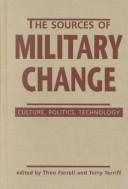| Listing 1 - 8 of 8 |
Sort by
|
Book
Year: 2011 Publisher: University of Georgia Press
Abstract | Keywords | Export | Availability | Bookmark
 Loading...
Loading...Choose an application
- Reference Manager
- EndNote
- RefWorks (Direct export to RefWorks)
Increasingly, the power of a large, complex, wired nation like the United States rests on its ability to disrupt would-be cyber attacks and to be resilient against a successful attack or recurring campaign. Addressing the concerns of both theorists and those on the national security front lines, Chris C. Demchak presents a unified strategy for survival in an interconnected, ever-messier, more surprising cybered world and examines the institutional adaptations required of our defense, intelligence, energy, and other critical sectors for national security.Demchak introduces a strategy of "security resilience" against surprise attacks for a cybered world that is divided between modern, digitally vulnerable city-states and more dysfunctional global regions. Its key concepts build on theories of international relations, complexity in social-technical systems, and organizational-institutional adaptation. Demchak tests the strategy for reasonableness in history's few examples of states disrupting rather than conquering and being resilient to attacks, including ancient Athens and Sparta, several British colonial wars, and two American limited wars. She applies the strategy to modern political, social, and technical challenges and presents three kinds of institutional adaptation that predicate the success of the security resilience strategy in response. Finally, Demchak discusses implications for the future including new forms of cyber aggression like the Stuxnet worm, the rise of the cyber-command concept, and the competition between the U.S. and China as global cyber leaders.Wars of Disruption and Resilience offers a blueprint for a national cyber-power strategy that is long in time horizon, flexible in target and scale, and practical enough to maintain the security of a digitized nation facing violent cybered conflict.
Information Warfare --- Cyberspace --- Computer Networks --- National Security --- Technology & Engineering --- Computers --- Political Science --- Information warfare --- Computer networks --- National security --- Technology & engineering --- Political science
Book
ISBN: 9781501723681 Year: 2018 Publisher: Ithaca, NY
Abstract | Keywords | Export | Availability | Bookmark
 Loading...
Loading...Choose an application
- Reference Manager
- EndNote
- RefWorks (Direct export to RefWorks)
Book
ISBN: 0820341371 9780820341378 1283252937 9781283252935 9780820338347 0820338346 9780820340678 0820340677 Year: 2011 Publisher: Athens University of Georgia Press
Abstract | Keywords | Export | Availability | Bookmark
 Loading...
Loading...Choose an application
- Reference Manager
- EndNote
- RefWorks (Direct export to RefWorks)
Multi
ISBN: 9781501723681 Year: 2018 Publisher: Ithaca, N.Y. Cornell University Press
Abstract | Keywords | Export | Availability | Bookmark
 Loading...
Loading...Choose an application
- Reference Manager
- EndNote
- RefWorks (Direct export to RefWorks)
Book
ISBN: 0877255393 Year: 1991 Publisher: Berkeley : University of California, Institute of International Studies,
Abstract | Keywords | Export | Availability | Bookmark
 Loading...
Loading...Choose an application
- Reference Manager
- EndNote
- RefWorks (Direct export to RefWorks)
Book
ISBN: 0822973707 9780822973706 9780822960614 0822960613 Year: 2010 Publisher: Pittsburgh, Pa. University of Pittsburgh Press
Abstract | Keywords | Export | Availability | Bookmark
 Loading...
Loading...Choose an application
- Reference Manager
- EndNote
- RefWorks (Direct export to RefWorks)
Disasters. --- Preparedness. --- Emergency management. --- Calamities --- Catastrophes --- Curiosities and wonders --- Accidents --- Hazardous geographic environments --- Readiness --- Reliability --- Consequence management (Emergency management) --- Disaster planning --- Disaster preparedness --- Disaster prevention --- Disaster relief --- Disasters --- Emergencies --- Emergency planning --- Emergency preparedness --- Management --- Public safety --- First responders --- Planning --- Preparedness --- Prevention --- Emergency management


ISBN: 1588261794 9781588261793 1555879756 9781555879754 Year: 2022 Publisher: Boulder
Abstract | Keywords | Export | Availability | Bookmark
 Loading...
Loading...Choose an application
- Reference Manager
- EndNote
- RefWorks (Direct export to RefWorks)
In varying circumstances, military organizations around the world are undergoing major restructuring. This book explores why, and how, militaries change. The authors focus on a complex of three influencing factors—cultural norms, politics, and new technology—offering a historical perspective of more than a century. Their analyses range from developing states to Russia, Britain, the U.S., and NATO. Throughout, they reveal the manifold interactions between state and military, and also within both, as primary driving forces of change.
Military art and science --- Armed Forces --- Civil-military relations --- Sociology, Military --- Military sociology --- Armies --- Peace --- War --- War and society --- Military and civilian power --- Military-civil relations --- Executive power --- Military government --- Armed Services --- Military, The --- Disarmament --- Fighting --- Military power --- Military science --- Warfare --- Warfare, Primitive --- Naval art and science --- History --- Technological innovations --- Militærvidenskab --- Våbenteknologi --- Udvikling
Digital

ISBN: 9781588261793 Year: 2022 Publisher: Boulder Lynne Rienner Publishers
Abstract | Keywords | Export | Availability | Bookmark
 Loading...
Loading...Choose an application
- Reference Manager
- EndNote
- RefWorks (Direct export to RefWorks)
| Listing 1 - 8 of 8 |
Sort by
|

 Search
Search Feedback
Feedback About UniCat
About UniCat  Help
Help News
News